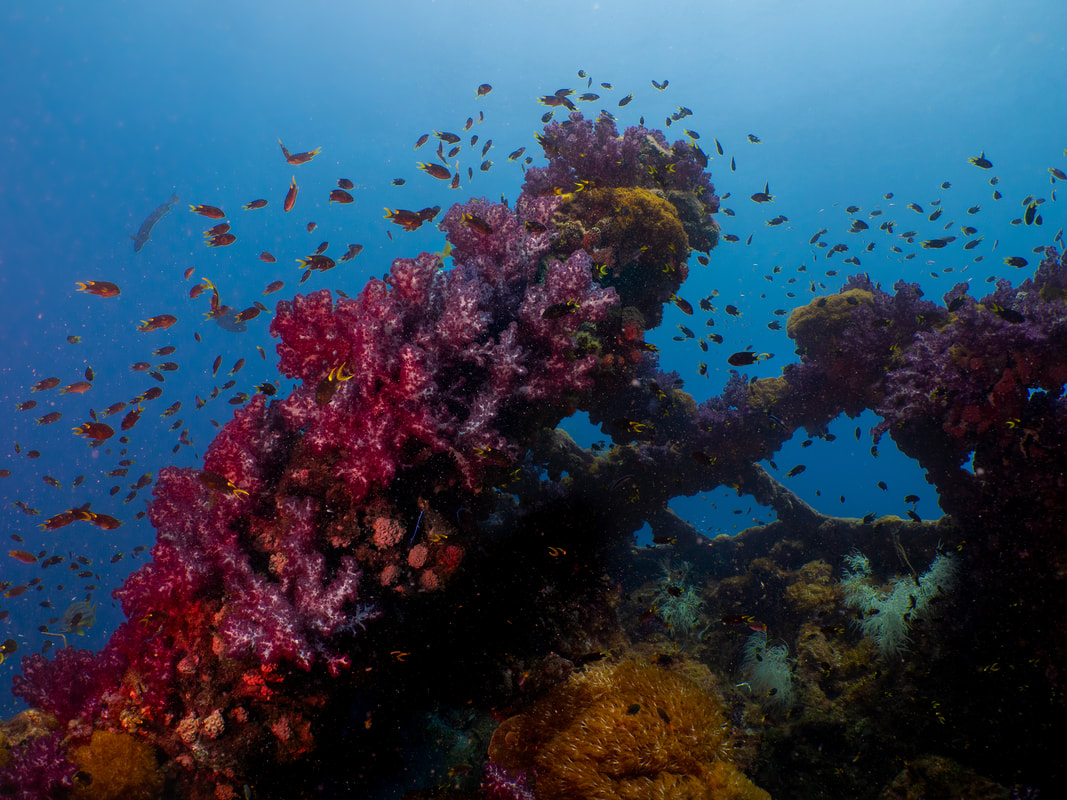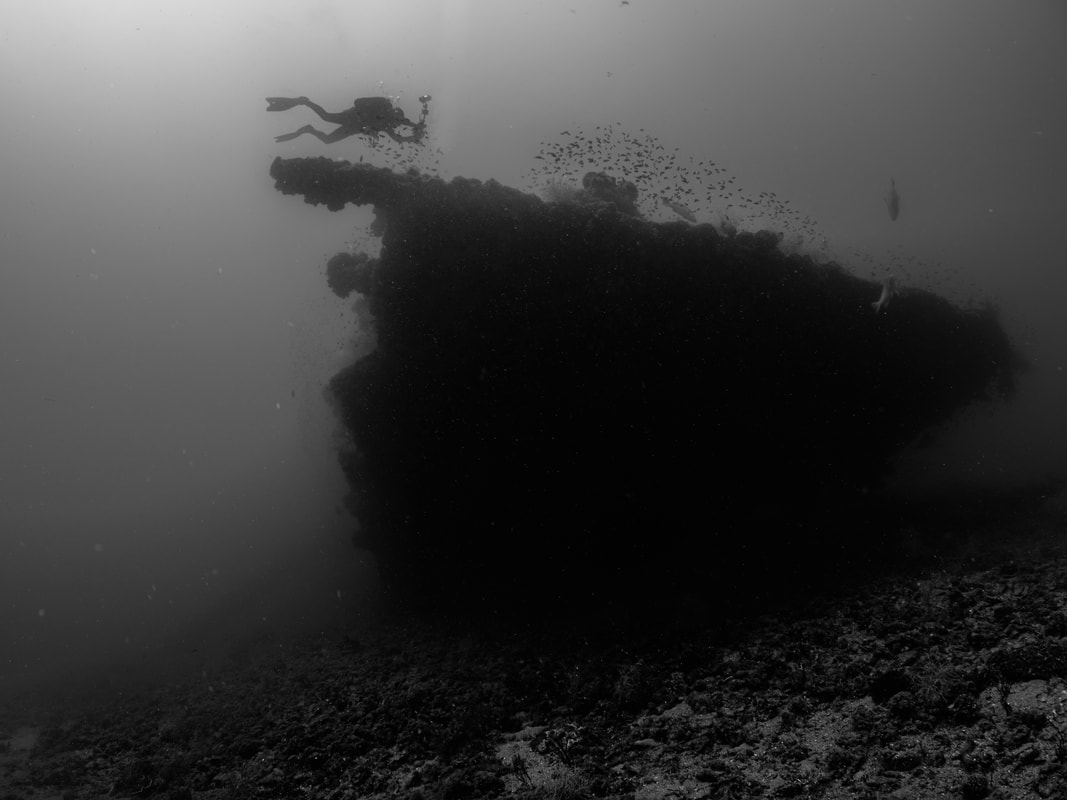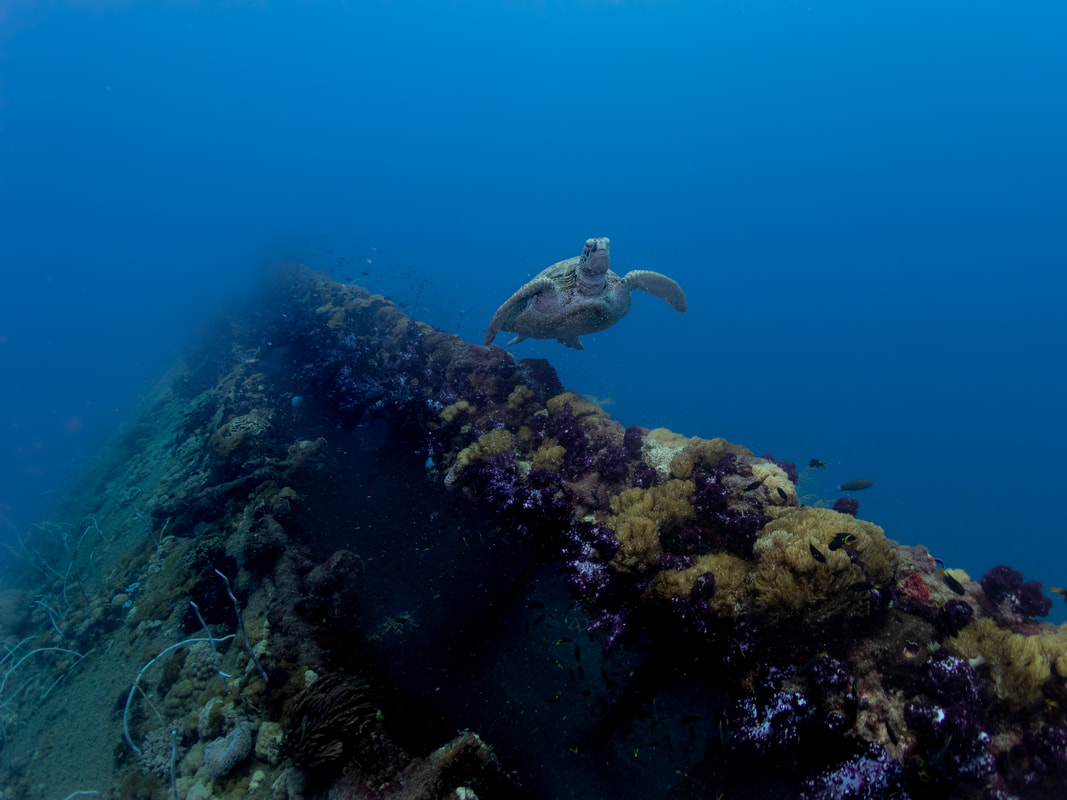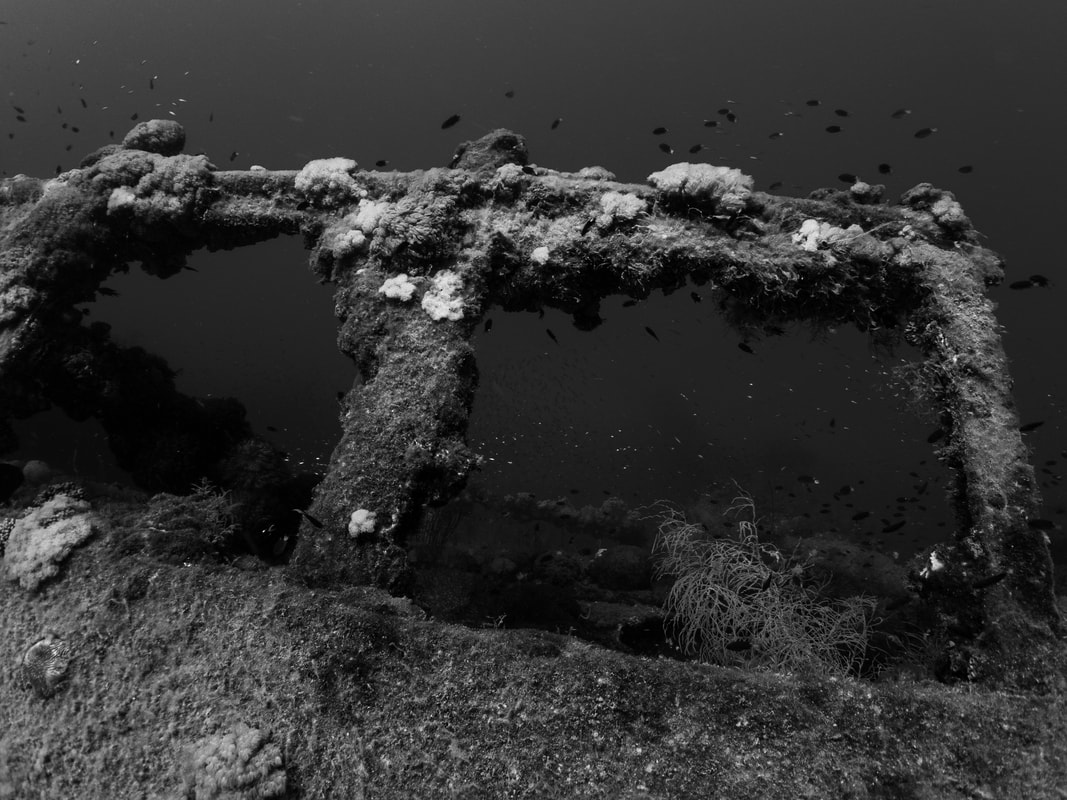Research your wreck and dive it more than once Because we had never dived the S.S. Yongala before, our first dive was essentially our ‘reconnaissance’ dive. At 109 meters long and a depth of 28 meters, we knew our bottom time would be limited, so we took the chance on our first dive to go deep at the stern to work out where the best photographic angles were. We dived the site as many times as the weather and currents would allow which enabled us to think about the best shots we could get on the wreck and also do some experimenting. Luckily the weather was in our favour allowing us to complete 4 dives in the limited time we had. Be first down Whilst it’s not always possible, for us it was important to descend to the wreck on our own and before other divers to get some shots. We found that having your buddy in the shot can definitely add drama and scale, particularly if the wreck is large like the Yongala. There is one hard and fast rule though: too many divers and their bubbles will most often always ruin your shot. Ambient light is your friend & your strobes often your enemy We worked out pretty quickly that with the Yongala being the size it is, we had no hope of lighting her with our strobes, and that keeping our strobes on would only light up all the particles we were trying to avoid. Shooting however in ambient light gave us the opportunity to get shots of the entire visible part of the wreck without having to worry about artificial light. It was actually quite liberating to be shooting in this way, as its not often that we turn off our strobes. It definitely enabled us to be more creative without having to worry about dealing with artificial light. Use close focus wide -angle to shoot some colour The visibility on wrecks can be challenging and is often limited to only a few meters or so. When you do turn your strobes back on, it feels like no matter which way you angle them your photos end up like a sand storm! We found however that the best shots we got using our strobes were ‘close focus wide-angle’. A wreck like the S.S. Yongala harbours extensive coral growth that encrusts every available surface of its huge structure, attracting; sponges, soft corals and prolific fish life, so close-focus wide angle shots really gave us the opportunity to display the Yongala’s coral brilliance. Be sure though to include part of the wreck’s structure in your shot as you want people to know that it is a wreck and not just any colourful coral reef. Photographs in black and white can create the mood you’re after So many artists use black and white as a means of expression. When colour can sometimes distract the viewer, black and white can help emphasis the shape and contrast of the wreck and orchestrate the mood you’re after to tell the wreck’s story. We found that because the visibility was low and the day was cloudy, we just couldn’t get some of our images to convey the mood we wanted, but in black and white, well they totally transformed! So, are you up for it? If you’ve never photographed a wreck before then the S.S. Yongala is one great way to start. Why wouldn’t you? It is one of the best wreck dives in the world and is older than the Titanic!
We chose to dive her from the closest access point at Alva Beach, Queensland Australia with the very reputable team at Yongala Dive.
2 Comments
26/2/2024 03:52:54 pm
Nice for information
Reply
21/5/2024 07:44:32 pm
What inspired you to photograph the wreck of the SS Yongala, and how did you prepare for the shoot?
Reply
Leave a Reply. |
AuthorAnita Verde Archives
February 2021
Categories
All
|








 RSS Feed
RSS Feed